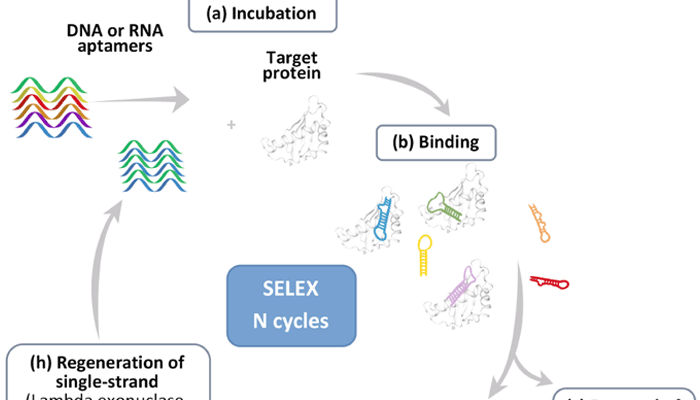
High-specificity nucleic acid aptamers for detection of ovarian cancer protein biomarkers: Application in diagnostics
MINIREVIEW
![]()
ISSN: 2514-3247
Aptamers (2021), Vol 5, 7-14
Published online: 21 September 2021
Full Text (HANZEK ~635kb) | (HANZEK Supplementary Data ~125kb) (PubMed Central Record HTML) | (PubMed) | (References)
Antonija Hanžek1, Christian Siatka1, 2 and Anne-Cécile E Duc1 ,*
1University of Nîmes – UPR CHROME, 7 Place Gabriel Péri, 30000 Nîmes, France
2Ecole de l’ADN, 19 Grand Rue, 30000 Nîmes, France
*Correspondence to: Anne-Cécile Duc, Email: anne-cecile.duc@unimes.fr
Received: 31 May 2021 | Revised: 16 September 2021 | Accepted: 21 September 2021
© Copyright The Author(s). This is an open access article, published under the terms of the Creative Commons Attribution Non-Commercial License (http://creativecommons.org/licenses/by-nc/4.0). This license permits non-commercial use, distribution and reproduction of this article, provided the original work is appropriately acknowledged, with correct citation details.
ABSTRACT
Ovarian cancer (OC) is the most deadly gynaecological cancer and the 8th leading cause of cancer-related deaths in women. Unfortunately, screening programs and early-stage diagnostic methods are not available, so late diagnosis remains a major contributor to the poor prognosis. Recently, aptamers have emerged as useful tools in cancer diagnostics. Aptamers are short single-stranded DNA or RNA oligonucleotides that bind with high specificity to diverse targets, including cancer biomarker proteins. Aptamers are developed in vitro using different variations of Systematic Evolution of Ligands by Exponential Enrichment (SELEX). Herein, we describe the advances in the development of high-specificity DNA and RNA aptamers for detection for OC protein biomarkers. Here, we present a discussion on their diagnostic application in the detection of two clinically relevant ovarian cancer biomarkers: Cancer Antigen 125 (CA125) and Human Epididymis protein 4 (HE4). Ten promising candidate aptamers (seven for CA125 and three for HE4) have been identified. The stability in human serum and target detection in clinically relevant concentration range demonstrates the utility of aptamers as molecular probes in OC biomarker tests. Aptamer-based diagnostic platforms, such as biosensors and clinical assays could enable easy and rapid protein detection, with potential for earlier diagnosis of OC that could be implemented in clinical practice in the future.
KEYWORDS: Ovarian cancer, CA125, HE4, SELEX, aptamers, biosensors, diagnostics
